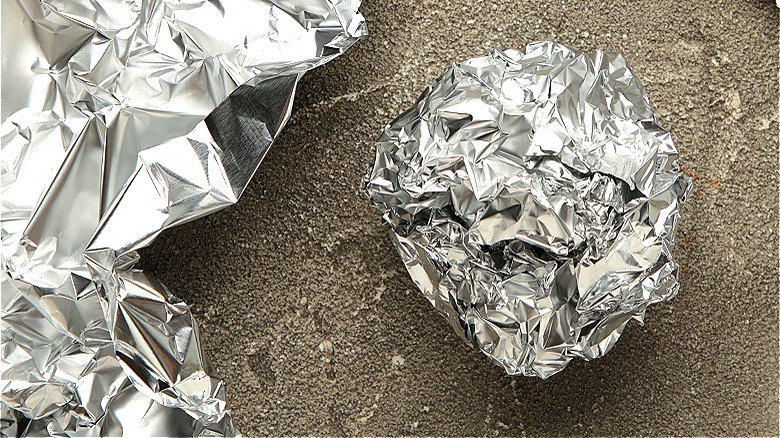We may receive a commission on purchases made from links.
Potted plants need sufficient soil, water, and sunlight to grow, but while water and sunlight are free, potting soil isn’t. But there’s a simple way to use less soil in your flower pots and planters, and that’s to use a filler at the bottom. For this gardening hack, the recommended material is a common kitchen tool used for food storage and keeping cooking surfaces clean: aluminum foil. Specifically, you can add small balls of aluminum foil to your flower pots to take up space and save soil. As a bonus, doing so may also help your pots and planters with drainage.
Drainage is vital for potted plants, as you don’t want to give root rot a chance. While out in the garden, water disperses into the soil, in a flower pot, sometimes water needs help in taking its leave. Remember, root rot occurs when the roots become inundated with excess water, whether from overwatering or improper drainage. Adding some tinfoil to the bottom of a pot could help ensure the soil doesn’t plug up the pot’s holes.
Save soil with aluminum foil

As said, adding various types of materials to the bottom of pots can help you use less soil. Materials such as foam packing peanuts, wood mulch, and even plastic bottles can help in that effort. As with aluminum foil, when added to a flower pot or planter, these items will account for some of the volume, which can be especially helpful when working with a large gardening container like this Real Wood Products half-barrel from Lowe’s or this Land Guard galvanized metal garden bed from Amazon.
Potting soil can’t only be expensive, but it can be heavy, too. For example, to fill half a wine barrel, it’ll take about four bags of soil. As for using aluminum foil to fill your pots and planters, this hack takes minutes. Just ball up pieces of tinfoil and place them on the bottom of your container. For the size, you can gauge an appropriate sphere by the other materials mentioned above. You can make them as small as packing peanuts or about the height of plastic bottles. You definitely don’t want them to be too small, so as to not cover up a pot’s drainage holes.